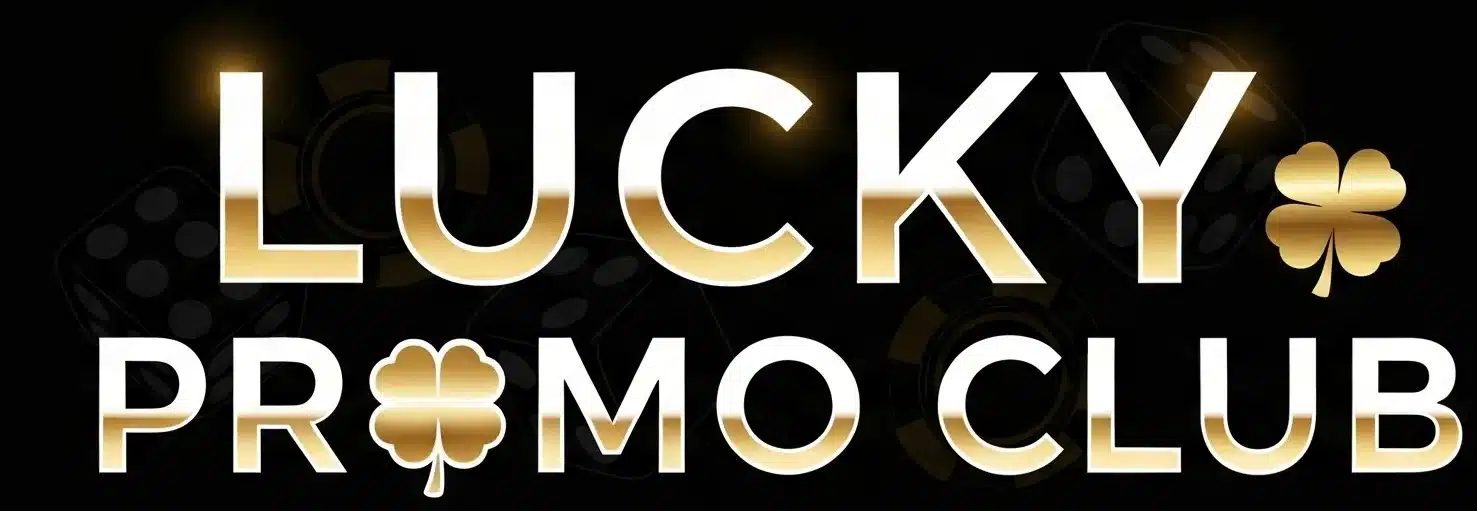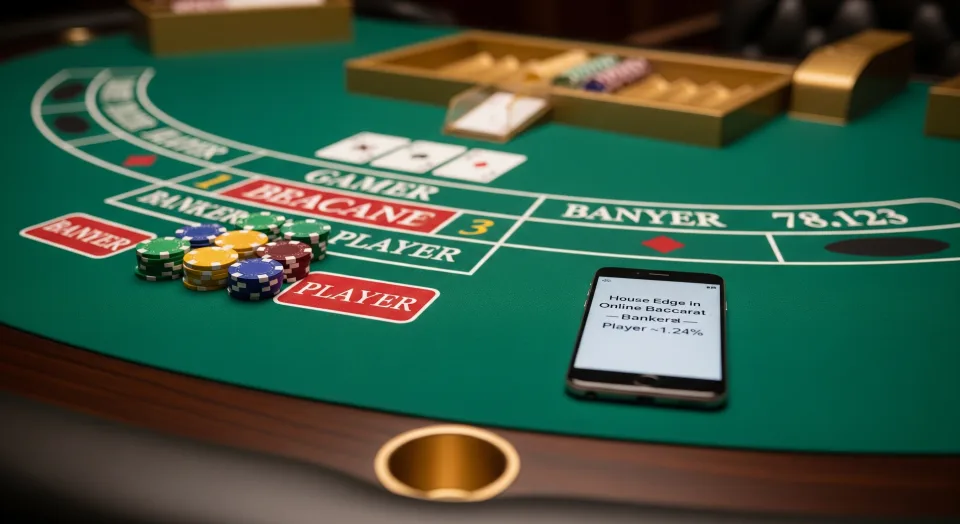The house edge in online baccarat is the built-in mathematical advantage the casino holds on each bet, and understanding it is the key to smarter, calmer play. In simple terms, baccarat offers three main wagers with different expected losses over time: Banker, Player, and Tie. Banker carries the smallest expected loss, Player is close behind, and Tie is the outlier with a far larger disadvantage. Knowing the numbers—and when variants or side bets change them—lets you choose stakes and sessions that fit your goals, budget, and tolerance for swings.
Baccarat Basics in 30 Seconds
Baccarat compares two hands—Banker and Player—with totals closest to nine. You can bet on either hand to win, or on a Tie. Online versions typically follow the Punto Banco rules: drawing is automatic, no decisions are required after you place your wager, and outcomes are fast. That speed is why understanding the house edge in online baccarat matters so much: many decisions in a short time can compound small edges quickly.
Baccarat House Edge: The Core Numbers
-
Banker bet: Typically ~1.06% house edge (with a 5% commission on Banker wins baked in).
-
Player bet: Typically ~1.24% house edge.
-
Tie bet: Usually >14% house edge (varies by payout—8:1 vs 9:1).
Those figures assume standard rules with eight decks and a 5% commission on Banker wins. The spread is why many players default to Banker: over long sessions, a lower edge reduces expected loss. But no bet can eliminate the house edge in online baccarat—the casino still has the advantage. (Authoritative reading: American Gaming Association’s player education on house advantage; UNLV research on baccarat house advantage.)
Banker vs Player: Why the Edges Differ
The Banker hand draws last and benefits from conditional drawing rules, which, over millions of hands, nudges its results slightly above the Player hand. The casino’s 5% commission on Banker wins is what brings the baccarat house edge back into profitable territory. If you see a “no-commission” version, read the rules carefully—most compensate with a reduced payout on specific Banker wins (e.g., a 6), changing the effective edge.
The Tie Bet: Why It’s So Punishing
A Tie pays more, but its probability doesn’t justify the payout in most games. At 8:1, the house edge in online baccarat on a Tie is typically well above 14%, making it one of the least friendly wagers on any casino floor. Raising the payout to 9:1 improves things a bit but still leaves Tie far behind Banker and Player. If you’re focused on minimizing expected loss, avoiding Tie is the simplest decision you can make.
No-Commission Baccarat and Variants
“No-commission” tables remove the 5% fee but change payouts to keep the casino’s advantage intact. Two common examples:
-
Super 6 / Banker 6 pays 1:2: Banker wins pay even money except when Banker wins with a total of six, which pays 1:2 (or sometimes 0.5:1). That tweak generally raises the Banker edge compared to standard rules.
-
EZ-style rules: Similar compensations apply (e.g., specific pushes or reduced payouts) that keep the game profitable for the house.
Always check the help screen of the exact game you’re playing. Small rule lines—decks used, payout on Banker-6, whether naturals affect payouts—shift the baccarat house edge enough to matter across many hands.
Side Bets: Fun, but Usually Costly
Pairs, Perfect Pairs, Dragon bonuses, and progressive side bets spice up the game but typically carry much higher edges than the main Banker/Player wagers. If you’re managing the house edge in online baccarat, treat side bets as entertainment purchases. Use them sparingly, and never rely on them as a “strategy” for long-term profit.
RTP vs House Edge (and Why It Matters Here)
Return to Player (RTP) is the complement of house edge. A 98.94% RTP corresponds to a 1.06% house edge, for example. If you’ve ever asked, What does RTP mean for slot players, the same principle applies in baccarat: over long horizons, higher RTP (lower edge) is better. Because baccarat edges are already low for Banker and Player, your biggest lever is simply choosing those bets and keeping stakes consistent.
Practical Bankroll Framing
-
Session goals: Decide in advance when you’ll stop—both for wins and losses.
-
Flat betting: With low edges, flat or gently scaled stakes help you stay near the theoretical expectation and avoid emotional spikes.
-
Pace: Online baccarat can be very fast. Pace your hands or take breaks to keep decisions deliberate.
-
Limits: If you’ve been exploring How to set deposit limits for responsible gambling, stick to them; low house edge doesn’t mean low risk.
Streaks, Scoreboards, and Trend Chasing
Many online tables show roadmaps (Bead Plate, Big Road, Big Eye Boy, etc.). They’re fun, but they don’t change the cards to come. The house edge in online baccarat is a product of fixed rules and probabilities—not the pattern of the last 20 hands. If using roadmaps keeps you engaged and slow, fine; just avoid raising stakes because of perceived “due” outcomes.
Short Sessions vs Long Sessions
In the very short run, variance dominates: you can be up or down regardless of edge. As hands accumulate, actual results tend to converge toward expectation, and the house’s advantage asserts itself. That’s why many players prefer shorter sessions with disciplined stop rules. The house edge in online baccarat never disappears; you simply control how much exposure you give it.
Crypto, e-Wallets, and Payout Quirks
Your payment method doesn’t change probabilities, but it can affect how quickly you see your results and how you track them. Keep statements, export game histories, and record session outcomes. If you’re wondering Are online gambling winnings taxable? the answer depends on your jurisdiction, but good records are always helpful for budgeting—and for taxes where applicable.
Common Questions, Straight Answers
Is Banker always the “best” bet?
Statistically, yes—under standard rules, Banker has the lowest edge. That doesn’t guarantee wins; it simply minimizes expected loss.
Should I ever bet Tie?
Only if you accept its entertainment cost. Its edge is many times higher than Banker or Player.
Can strategy beat the house edge?
No deterministic betting system changes the math. Sensible tactics—fewer side bets, disciplined limits, slower pace—can reduce mistakes, not the underlying edge.
Do live dealer and RNG baccarat have different edges?
If rules and payouts match, the house edge in online baccarat is the same. Live dealer games feel slower and may help you pace sessions; RNG is typically faster.
How to Use House Edge in Your Decision-Making
-
Pick the lowest-edge wagers (Banker, then Player).
-
Avoid the Tie in most formats.
-
Read the rules pane before playing any variant.
-
Use stop-loss and stop-win levels to control session length.
-
Track outcomes to understand volatility and keep expectations realistic.
Two Authoritative Resources
For neutral, educational reading on advantage and baccarat math, see:
-
American Gaming Association – Play Smart from the Start (house advantage education): https://www.playsmartfromthestart.org/ American Gaming Association
-
UNLV Gaming Research – papers referencing baccarat house advantage: https://oasis.library.unlv.edu/ (e.g., GRRJ studies noting ~1.06% Banker and ~1.24% Player) OAsis Research Repository+1
Key Takeaways
-
The house edge in online baccarat is low for Banker (~1.06%) and Player (~1.24%) but very high for Tie (>14% at 8:1).
-
Variants and “no-commission” rules tweak payouts to preserve the edge—always read the help screen.
-
Side bets are fun but usually expensive; use them sparingly.
-
Discipline on pace and limits matters more than “systems”—the math doesn’t change.

